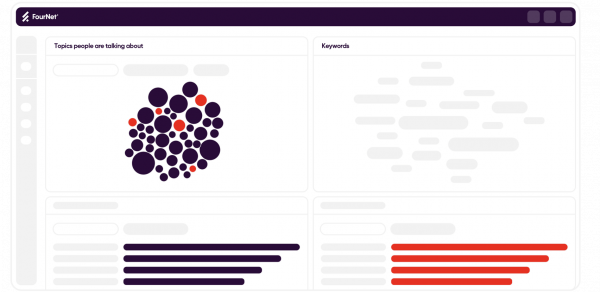Sentiment Analysis and the Tenant Satisfaction Measures – Caroline Thomas, Senior CX Service Designer at Fournet explains.
Where it all began
Sentiment analysis, also known as opinion mining, has a history dating back to the 1960s when the first attempt was made by psychologist Stuart Oskamp to classify text based on sentiment using a simple counting method. In the 1980s and 1990s, sentiment analysis gained popularity in market research. In the early 2000s, machine learning algorithms were introduced to sentiment analysis, allowing for more accurate analysis of large datasets. With the emergence of social media in the mid-2000s, sentiment analysis became an important tool for monitoring and understanding public opinion on platforms such as Twitter and Facebook.
In recent years, sentiment analysis has become more widely used across industries, including finance, healthcare, and politics. Advances in natural language processing (NLP) and machine learning have led to more accurate sentiment analysis and the ability to analyse more complex types of text, such as social media posts and product reviews. Today, sentiment analysis is a rapidly growing field, and continues to be an important tool for understanding and analysing public opinion.
Uncovering Satisfaction
With the Tenant Satisfaction Measures that come into effect in April 2023, understanding the sentiment of tenants will be more critical than ever. While the survey questions themselves have fixed responses, the verbatim comments could be a valuable source of additional data for Housing Associations on the reasons behind their feedback enabling data led strategies on what improvements and changes need to be made.
Pros
Scalability: Sentiment analysis can be applied to large volumes of text data, making it useful for processing not only verbatim feedback but social media feeds and other forms of user-generated content at scale.
Speed and efficiency: Sentiment analysis algorithms can quickly and accurately classify the sentiment of a large volume of text, saving time and effort compared to manual analysis.
Insights: Sentiment analysis can provide valuable insights into customer opinion helping housing associations make data-driven decisions.
Cons
Accuracy: Sentiment analysis algorithms are not always accurate and may misclassify sentiment, especially in cases of sarcasm or irony.
Contextual limitations: Sentiment analysis algorithms often struggle to account for the nuances of language and sector specific context, leading to errors in classification.
Bias: Sentiment analysis algorithms may be biased towards certain sentiments or groups of people, depending on the training data used.
Lack of granularity: Sentiment analysis can only provide a high-level analysis of sentiment and may not be able to capture the nuances of sentiment within a piece of text.
Why understanding customer emotions is as important as the identifying the sentiment.
Sentiment and emotion are related concepts, but they are not the same thing.
Understanding both emotions and sentiments in natural language processing (NLP) is important because they provide different and complementary information.
Sentiment refers to the polarity of a text, whether it is positive, negative or neutral. Sentiment analysis is useful for quickly getting a general understanding of the attitude expressed in a text.
Emotion, on the other hand, refers to the feelings or states of mind evoked by a text, such as anger, joy, fear, or sadness. Emotion analysis is more nuanced than sentiment analysis because it attempts to capture the complex and multi-dimensional nature of human emotions.
Understanding emotions in addition to the sentiment can provide deeper understanding insights into the impact an experience had or is having on a customer.
What does the future look like and how could sentiment analysis support the housing sector?
Multilingual sentiment analysis: With such a growing, diverse cultural make up across UK housing associations, multilingual sentiment analysis has become more important. Advanced machine learning models that can accurately analyse sentiment in multiple languages will be in high demand.
Real-time sentiment analysis: The ability to analyse sentiment in real-time, integrated with chatbots, voice assistants and recommendation engines providing support to both agents and customers.
Emotion detection: Sentiment analysis has moved beyond simply identifying positive or negative sentiment, to detecting emotions such as anger, joy, or sadness. This will enable businesses to provide more personalised customer experiences and make more informed business decisions.
 Why Choose FourNet?
Why Choose FourNet?
Our background and experience is rooted in the contact and data centre, delivering on countless digital transformation projects for our customers.
Working with some of the most secure, critical and commercially driven organisations in the UK; we understand that ‘good’ customer experience means different things for all organisation and the steps to achieving it can change.
We can help you deliver a digital transformation strategy for your CX, improve your XCaaS and infrastructure security.
Find out more about our customer experience consultancy Click Here
Award-winning FourNet is one of the fastest growing privately owned technology companies in the UK, providing communications, cloud, contact centre, managed service and secure infrastructure solutions. We work with some of the most secure, critical and commercially driven customers in the UK, including more than 30 UK Government departments and agencies, as well as emergency services and local authorities. FourNet is an ethical and environmentally responsible business, committed to maximising our positive environmental and social impacts and championing transparency in all our business operations.
For additional information on FourNet view their Company Profile



 Why Choose FourNet?
Why Choose FourNet?


